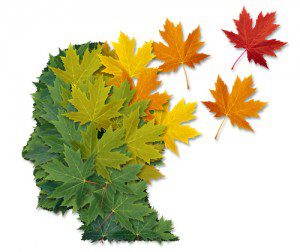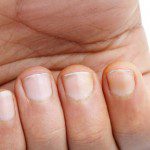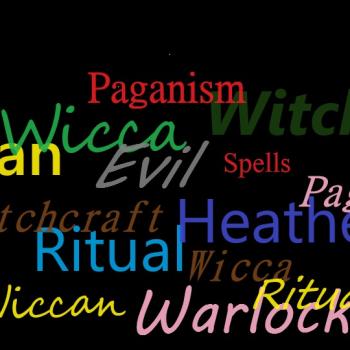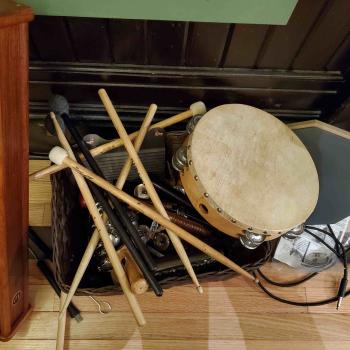
As a practicing Pagan and a facilitator of public Pagan ritual, one of the things I’m most interested in is the effect of religious practice, particularly the embodied, participatory sort of religious practice that Pagans get up to, on the well-being of practitioners. On most days, if you ask me what it is about spiritual practice that has the potential to improve people, I would say something about the transformative nature of encounters with deity, or the development of discipline that’s inherent to spiritual practice, or the beneficial effect of striving with like-minded people. And all of those things are important to me, but recently, I’ve been thinking about the ways in which the techniques common in my practice might be beneficial to mental health.
The Body Keeps the Score
 This is because I recently read a book that fascinated me: Dr. Bessel van der Kolk’s “The Body Keeps the Score: Brain, Mind, and Body in the Healing of Trauma”(1). This is a fairly dense, but engaging, story about Dr. van der Kolk’s lifetime of work with combat veterans, victims of abuse, accident survivors, and other folks who have suffered from trauma. It talks about the prevalence of trauma; nearly two thirds of adults in the U.S. report at least one significant traumatic experience before turning 18(2), as well as long-term effects on mental and physical health, and the ways in which people heal. As I was reading, I was struck by the similarities between some of the interventions cited as particularly helpful, and techniques commonly used in Pagan ritual.
This is because I recently read a book that fascinated me: Dr. Bessel van der Kolk’s “The Body Keeps the Score: Brain, Mind, and Body in the Healing of Trauma”(1). This is a fairly dense, but engaging, story about Dr. van der Kolk’s lifetime of work with combat veterans, victims of abuse, accident survivors, and other folks who have suffered from trauma. It talks about the prevalence of trauma; nearly two thirds of adults in the U.S. report at least one significant traumatic experience before turning 18(2), as well as long-term effects on mental and physical health, and the ways in which people heal. As I was reading, I was struck by the similarities between some of the interventions cited as particularly helpful, and techniques commonly used in Pagan ritual.
Dr. van der Kolk cites three categories of approaches in healing trauma, and puts forth the idea that people might need all three. Two are medication and therapy, both best left to professionals, and reasonably available if one has access to the medical system. The third type of approach, though, includes a variety of techniques meant to get people’s brains and bodies working together, to help people to be comfortable in their own skin and aware of their own feelings, and to bolster feelings of trust, belonging, and support from others. Among the techniques discussed are focused breathing, manipulation of brain waves and entry into trance-like states, and communal rhythm, movement, and entrainment. These are things we do in circle, even if we describe or understand them differently.
The book discusses slow, focused breathing in the context of yoga practice, and as an intervention in and of itself. This type of breathwork can increase heart rate variability (HRV), a measure of the heart’s responsiveness to activity in the nervous system. Low HRV is associated with increased risk of congestive heart failure, metabolic syndrome, and a host of other health problems, and at a very simple level can be described as a physiological symptom of stress, whether that stress comes from lingering trauma or just the difficulties of the day. Movement and exercise are known to increase HRV, but it can also be improved in a lower-impact way. These instructions come from heartmath.org, which offers a number of training programs and tools for monitoring and improving HRV:
“Focus your attention in the area of your heart. Imagine your breath is flowing in and out of your heart or chest area. Breathe a little slower and deeper than usual.”
If you’ve ever done grounding and centering in ritual, or participated in trance or guided visualization, you will find these instructions to be more than a little bit familiar. It’s a common part of our practice that I’ve always thought of in terms of creating calmness and inner strength, but not as a health intervention.
Van der Kolk also discusses techniques for manipulating brain waves, either training or tricking the brain into entering states conducive to healing, integration, learning, or relaxation. While we don’t generally have access to neurofeedback machines in ritual space (they’d be kind of out of place anyway), we do have some techniques available to us to trick the brain into changing states. Trance work, for example, is generally intended to move the brain deliberately into a relaxed state, which corresponds to an alpha-wave pattern in the brain, and then into a free-floating, dreamlike state where theta-waves predominate. Van der Kolk describes the theta-wave state as having “the potential for making novel connections and associations”, and discusses potential benefits of using alpha- and theta-wave training to “loosen frozen associations and facilitate new learning” in people suffering from PTSD. While I usually have not had recovery from PTSD in mind when practicing or facilitating trance work, my goals are often to help shake up old patterns that are not currently useful and to unearth new knowledge, experience, and insight.
Finally, the book covers the effects of moving together in song, dance, theater, and play. There is a sense that these things contribute to healing both because they can create or strengthen safe and supportive bonds between people, and because they can help people to “find a voice” with which to share their experiences. Those bonds and that voice may be necessary before a person can fully benefit from traditional therapy. In one story, a therapist working with abused children receives nothing but blank looks from his young patient, until he pulls out a ball and engages the child in a mutually responsive game of rolling the ball back and forth. In another, Van der Kolk talks about the power of singing together during Committee for Truth and Reconciliation hearings in South Africa, how singing and dancing allowed a way to process through the pain of the stories of atrocity being shared. Although he admits that there is no formal research on the mental health effects of communal ritual, he expresses a belief that there is healing in such practices. I’d like to see that research done, myself.
All of this gets me thinking. I am not a trauma expert, or a medical professional, just a ritual facilitator with a curious mind and a desire to help people. Given the prevalence of traumatic experiences, both major and minor, the barriers many people have to access to mental health care, and how difficult it can be to heal from trauma, is it worth thinking about how we can use spiritual and religious practice to assist in this kind of healing? One cannot and should not attempt to replace professional health care with spiritual work, but I believe that we might look at some of these practices as a type of complementary mental health work. I have always thought of the circle as a place of healing and transformation, but this knowledge is allowing me to see some unexpected ways in which that healing might manifest.
-
I heartily recommend this book; it’s in turns fascinating and alarming, and actually a fairly accessible read for the subject matter. (Van der Kolk, Bessel, M.D. (2014) The Body Keeps the Score: Brain, Mind, and Body in the Healing of Trauma. New York: Viking.)
-
This is one of the key findings of the Adverse Childhood Experience study performed from 1995-1997 by the CDC and Kaiser Permanente. Other key findings and information about the study are available from the CDC here: http://www.cdc.gov/violenceprevention/acestudy/index.html

















